Are you facing the daunting task of drafting a letter for board director disciplinary action? It can be a tricky endeavor, balancing professionalism with the gravity of the situation. This article will guide you through the essential elements to include in your letter, ensuring clarity and maintaining a respectful tone. Keep reading to discover expert tips and a customizable letter template to make this difficult process just a little bit easier!

Specific Incident or Behavior
Disciplinary actions against board directors require careful documentation detailing specific incidents or behaviors that warrant the action. In a recent incident on July 15, 2023, at the quarterly board meeting held at the Main Conference Hall of the Corporate Headquarters in New York, an incident occurred involving Director John Smith. Smith's unbecoming behavior included interrupting fellow board members repeatedly and using derogatory language when discussing a fellow director's proposal. The meeting minutes recorded that these actions not only disrupted the flow of the meeting but also created a hostile environment, undermining the collaborative spirit essential for effective governance. Following the incident, an internal review revealed a pattern of similar behavior from Smith over previous meetings, indicating a level of disrespect towards the board's decorum. This pattern ultimately prompted the need for disciplinary action in accordance with the company's code of conduct.
Supporting Evidence
In organizational settings, documenting disciplinary action against board directors necessitates comprehensive supporting evidence to maintain transparency and ensure adherence to bylaws. This evidence may comprise official reports detailing misconduct incidents or breaches of ethical guidelines, witnessed accounts from other board members, and relevant email correspondence highlighting unprofessional behavior. Additionally, evaluation metrics, such as attendance records and participation levels at board meetings, can serve as quantitative evidence. Contextualizing disciplinary actions requires an understanding of the organization's operational framework, including policies outlined in governance documents, such as the Code of Conduct and Conflict of Interest policies. This thorough documentation solidifies the rationale for proposed disciplinary measures and upholds organizational integrity.
Reference to Relevant Policies
Disciplinary actions against board directors must adhere to established governance frameworks, such as the Governance Code issued by the Institute of Directors. Violations may include breaches of fiduciary duty, failure to comply with ethical standards, or inappropriate conduct. Specific policies, like the Code of Conduct and Conflict of Interest policy, outline expectations for integrity, transparency, and accountability in decision-making. For instance, the Conflict of Interest policy explicitly details procedures for disclosing personal interests that may impact board decisions, ensuring fair process. Failure to follow these guidelines can result in disciplinary measures, such as suspension or removal from the board, reinforcing the organization's commitment to maintaining high standards of governance and trust.
Consequences and Next Steps
Disciplinary action against board directors can arise from violations of corporate governance policies or unethical behavior. Specific consequences may include suspension from board activities (lasting from a few months to permanent removal), mandated training on compliance and ethical standards, or formal reprimands issued during board meetings. Next steps typically involve a thorough investigation, possibly led by an external consultant or legal expert, aiming to ensure impartiality and adherence to governance best practices. The board may also schedule follow-up meetings to discuss the findings, outline corrective actions, and implement necessary changes to policies to prevent future infractions, ensuring organizational integrity and accountability.
Appeal Process Information
The appeal process for disciplinary action taken against board directors involves several critical steps designed to ensure fairness and transparency. Notifications of disciplinary action, including specific reasons, should be documented in detail, alongside the outlined ramifications affecting the director's position on the board. An appeal must be submitted within 14 days of receiving the disciplinary notification, providing a written statement that outlines the basis for the appeal. This statement should include pertinent evidence, any applicable laws, and a clear indication of whether the director seeks a formal hearing. A designated appeals committee, comprising independent members, will review the case. Following the review, the committee may convene to discuss findings and make a determination regarding the validity of the appeal. The director will receive written notification of the committee's decision within 30 days, detailing any further options for escalation if the appeal is denied.
Letter Template For Board Director Disciplinary Action Samples
Letter template of board director performance review and disciplinary action
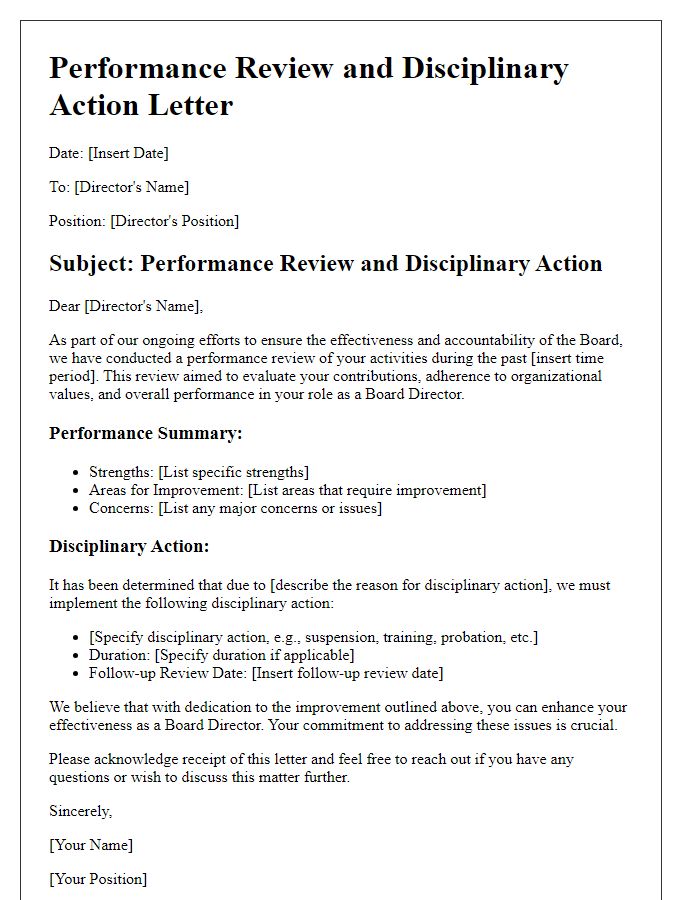
Letter template of board director appeal decision regarding disciplinary action
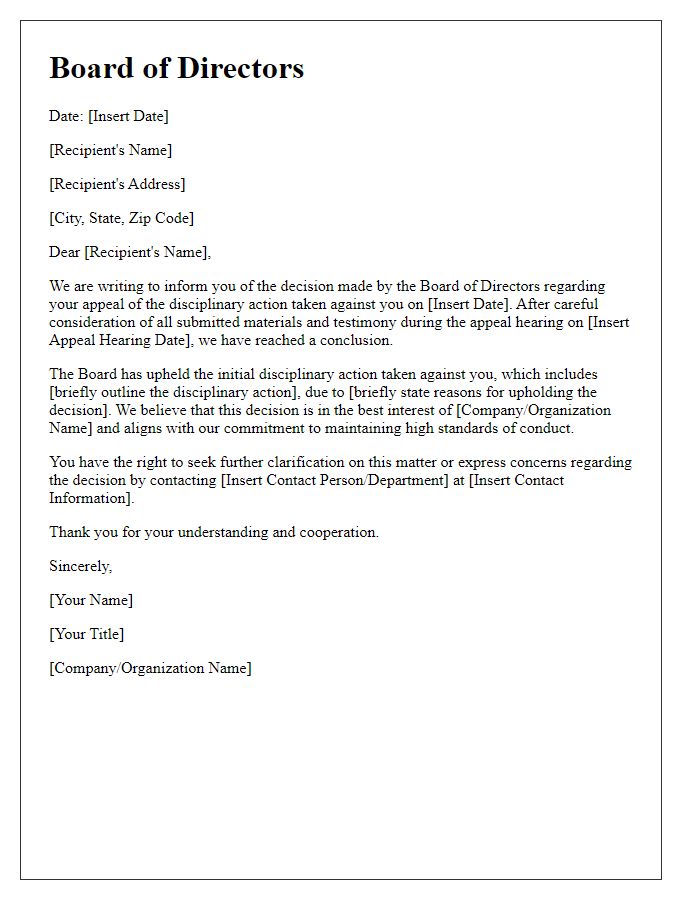

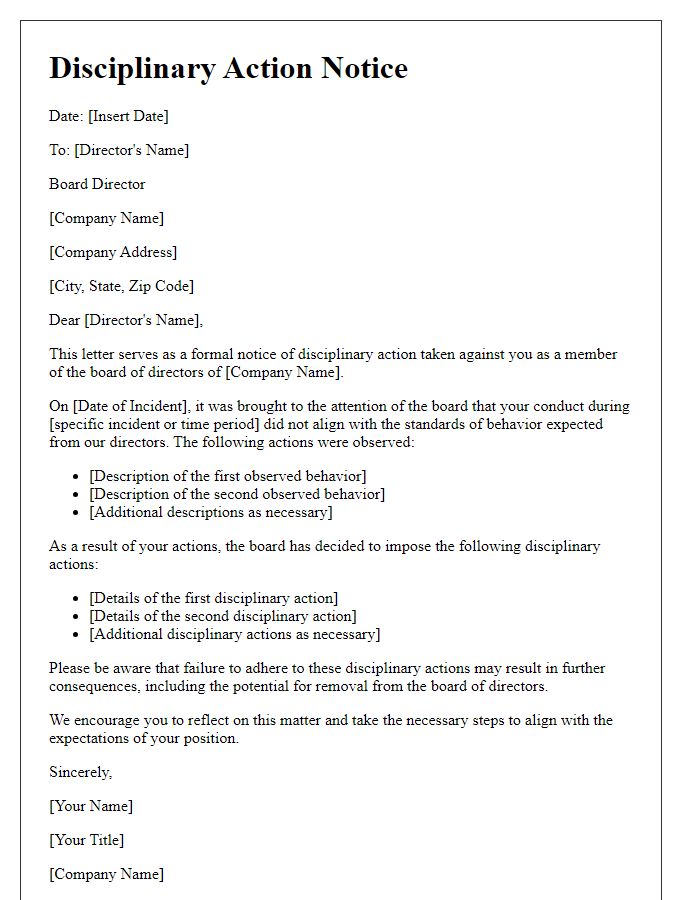
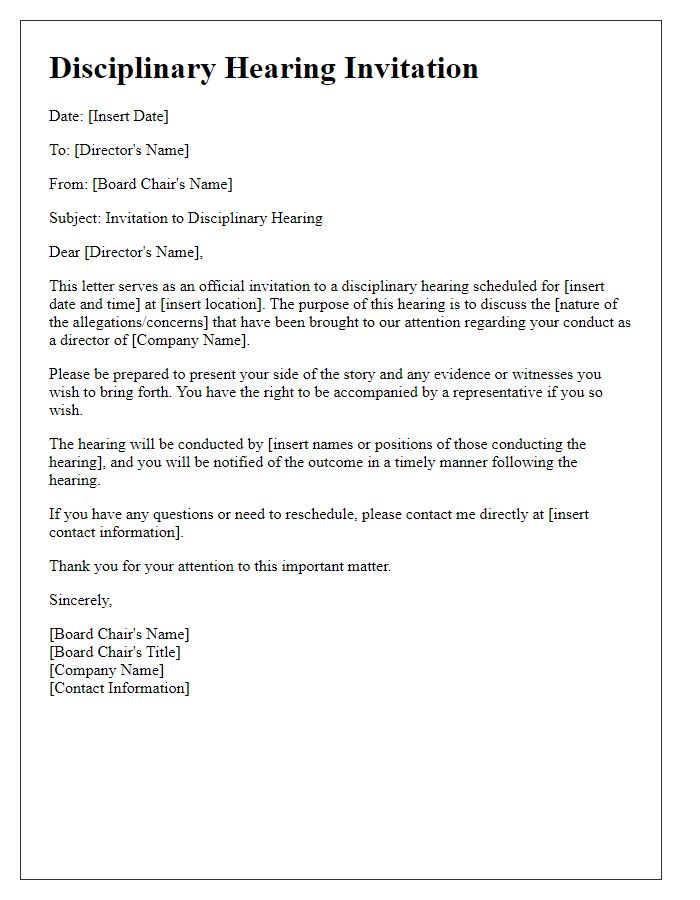
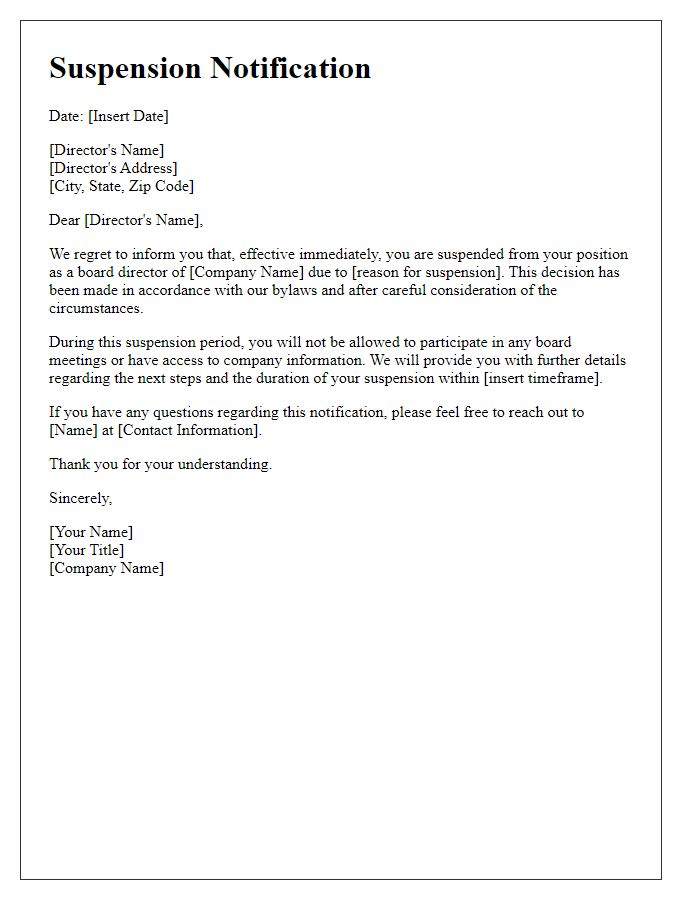
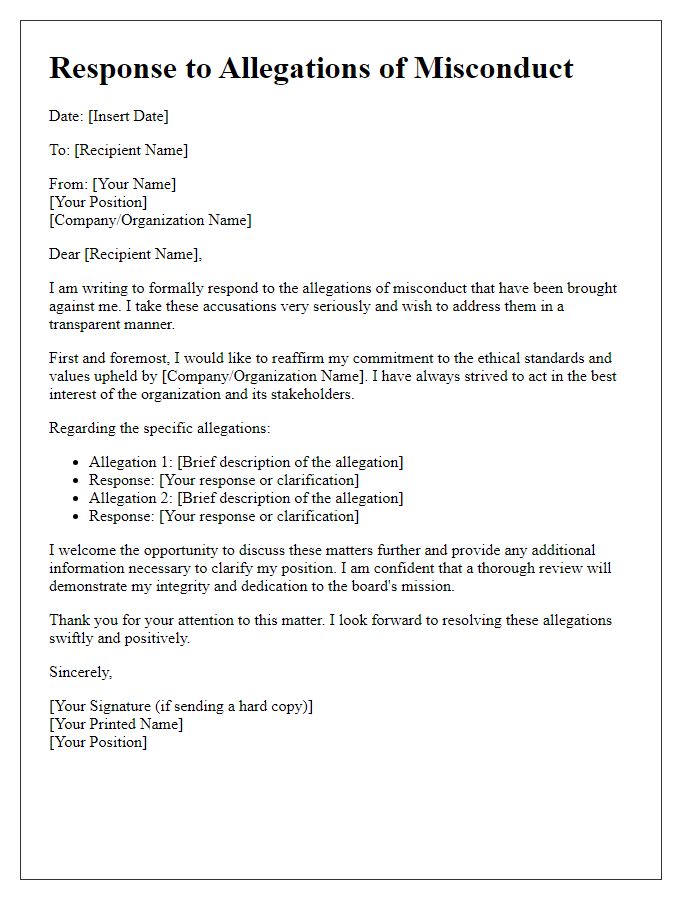
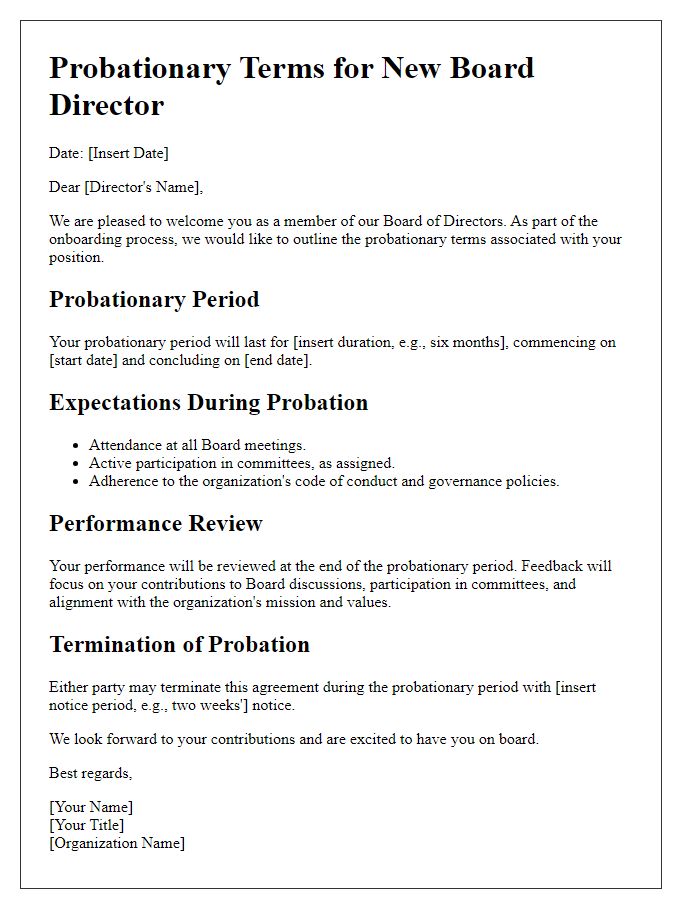
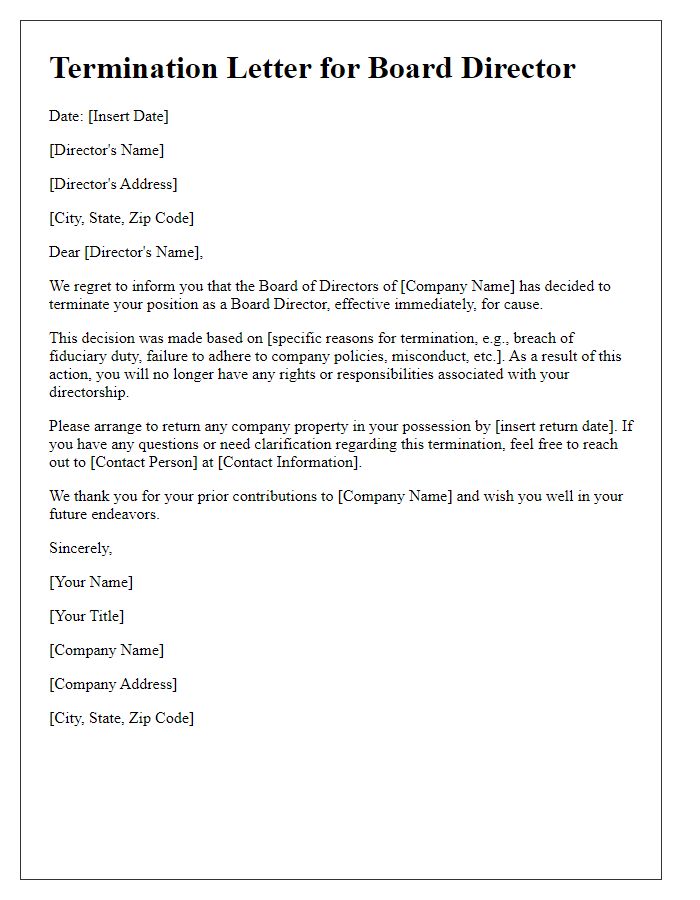
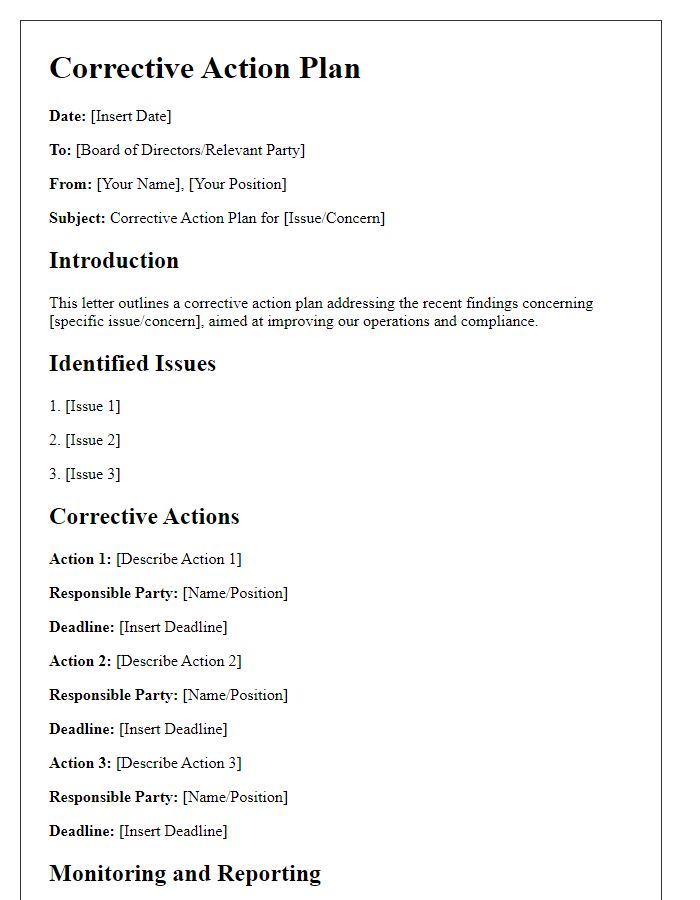
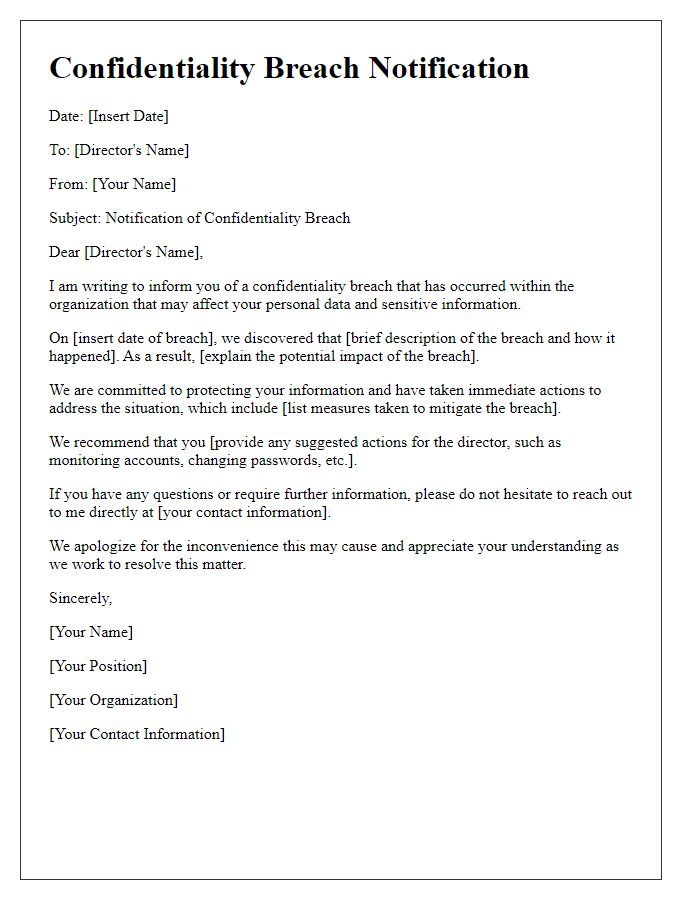


Comments